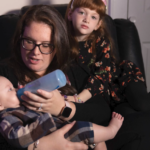In a recent blog, we talked about the importance of teaching mental health as part of school curriculum. In fact, Gov. Andrew Cuomo signed legislation last year that requires schools to provide instruction in mental health on or after July 1, 2018.
But earlier legislation also required schools to include education on the use of alcohol, tobacco and other substances.
All of these areas are extremely important to bring into the school curriculum. While parents play a huge role in their child’s education, schools are where your kids spend a great part of their time five days a week, and it would be a shame—and also against New York State law—for schools to miss the opportunity to share important information to aid in children’s mental and physical health.
One area that’s relatively new in the discussion of substance abuse involves vaping, described as follows by the National Center on Addiction and Substance Abuse.
Vaping is the act of inhaling and exhaling the aerosol, often referred to as vapor, which is produced by an e-cigarette or similar device. The term is used because e-cigarettes do not produce tobacco smoke, but rather an aerosol, often mistaken for water vapor, that actually consists of fine particles. Many of these particles contain varying amounts of toxic chemicals, which have been linked to cancer, as well as respiratory and heart disease.
Clearly, the idea that e-cigarettes are a healthy alternative to tobacco is dead wrong—in fact, most e-cigarettes contain nicotine solutions. Sadly, the use of e-cigarettes among teens and even middle schoolers is increasing dramatically. According to the Centers for Disease Control and Prevention, more than 3 million teens used e-cigs in 2015, a tenfold increase over four years. Middle schoolers are also using them in much larger numbers, with the rate of e-cig use rising to 5 percent, from 0.6 percent in 2011.
Unlike with tobacco, the makers of e-cigarettes are allowed to use sweet flavorings like vanilla or other candy and dessert flavors, clearly an attempt to hook younger users on their product. Since studies show that e-cigarette use is higher than the use of regular cigarettes, it appears that the marketing is working, and that the mistaken idea that these products are safe has taken hold.
So what is a parent to do? First, let your kids know that e-cigarettes are not safe alternatives to cigarettes. The studies increasingly show that they can cause:
- Damage to the brain, heart and lungs
- Cancerous tumor development
- Preterm deliveries and stillbirths in pregnant women
- Harmful effects on brain and lung development, when use occurs during fetal development or adolescence
They also probably don’t know that most e-cigarettes contain nicotine, which is a known carcinogen and also is highly addictive. It also increases the risk of a variety of both physical and mental health problems later in life. So, if they tell you, Mom, these aren’t like cigarettes, you can tell them the reality.
Another point that’s important for kids to know: the additives, heavy metals, ultrafine particles, and other ingredients in e-cigarettes are toxic carcinogens—hardly a safe alternative to regular cigarettes. In addition, according to a Yale study, nearly one in five e-cigarette users has also used e-cigarettes for marijuana, or marijuana byproducts like hash oil. Some teens are also using these devices to vaporize opiates and forms of “synthetic weed” such as K2 and Spice.
“One important fact is that adolescents use vapes because there is no smell,” explains Kathy Knaust, Clinical Supervisor for the Drug and Alcohol Program at the Guidance Center’s Leeds Place location. “Marijuana use is often detected by the strong odor burning it gives off, but with vaping use it is not detected by odor so they need to be very aware of the physical and behavioral effects of various substances.” Some of those effects include short-term memory loss, anxiety, hallucinations and feelings of panic.
Hopefully, with the schools backing up these facts about vaping, your kids will heed your message and stay away from this new form of substance abuse. But if you discover that your kids are vaping, take it seriously. Contact the Guidance Center at (516) 626-1971.
Sources:
https://yourteenmag.com/drugs-alcohol/using-e-cigarettes-for-marijuana
https://www.centeronaddiction.org/e-cigarettes/recreational-vaping/what-vaping
https://www.theverge.com/2016/12/29/14117964/e-cigarette-vaping-increase-teens-cdc-health-risks
















